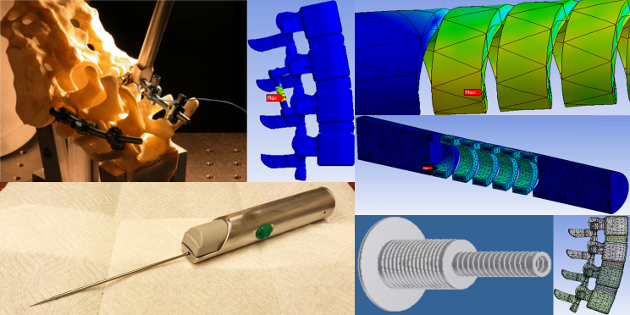Biomedical Applications
Main Content

The biomedical research conducted in IMEL supports and advances the body of knowledge in the current field of health research and medicine. The projects worked on in IMEL connect engineering concepts to applications in these fields. Some of the key projects include: design and analysis of the set-screw for spinal neurosurgery, design and stress analysis of dynamic spinal stabilizers, and design of a new biopsy needle and gun for prostate analysis. Here, students have the ability to apply lessons taught in the classroom to real world projects and innovations.
Set-screw for spinal neurosurgery
Using design and modeling tools, tests were performed on a set-screw used in spinal neurosurgery. Spinal implants were used to evaluate load forces and impacts on the spine. These tests are beneficial to finding ways to stabilize the spine and correct spinal deformities. These studies are possible with the use of many manual and powered instruments available in IMEL. Torque and fatigue, for example, were two elements that necessitated measurement in this research. Computer mapping systems helped facilitate comprehensible data maps to show these distributions across the given region.
Dynamic spinal stabilizers
Also working with spinal implants, was research focused on spinal stabilizers. In this research, different designs were created and tested to try to maximize flexibility and motility after these stabilizers are implanted. Various modeling tools, including Computer Aided Design and ANSYS Workbench, were implemented to create the prototypes for this work. Due to the necessities for very precise measurements, simple sketching could not be used.
Biopsy gun
Currently, the students working in IMEL are testing prototypes of a new design for prostate biopsy needles. Each prototype begins with machining specially designed mounts to house the prototypal needles. The gun can then be tested to evaluate its effectiveness and durability when juxtaposed to the current designs being used in the fiel



